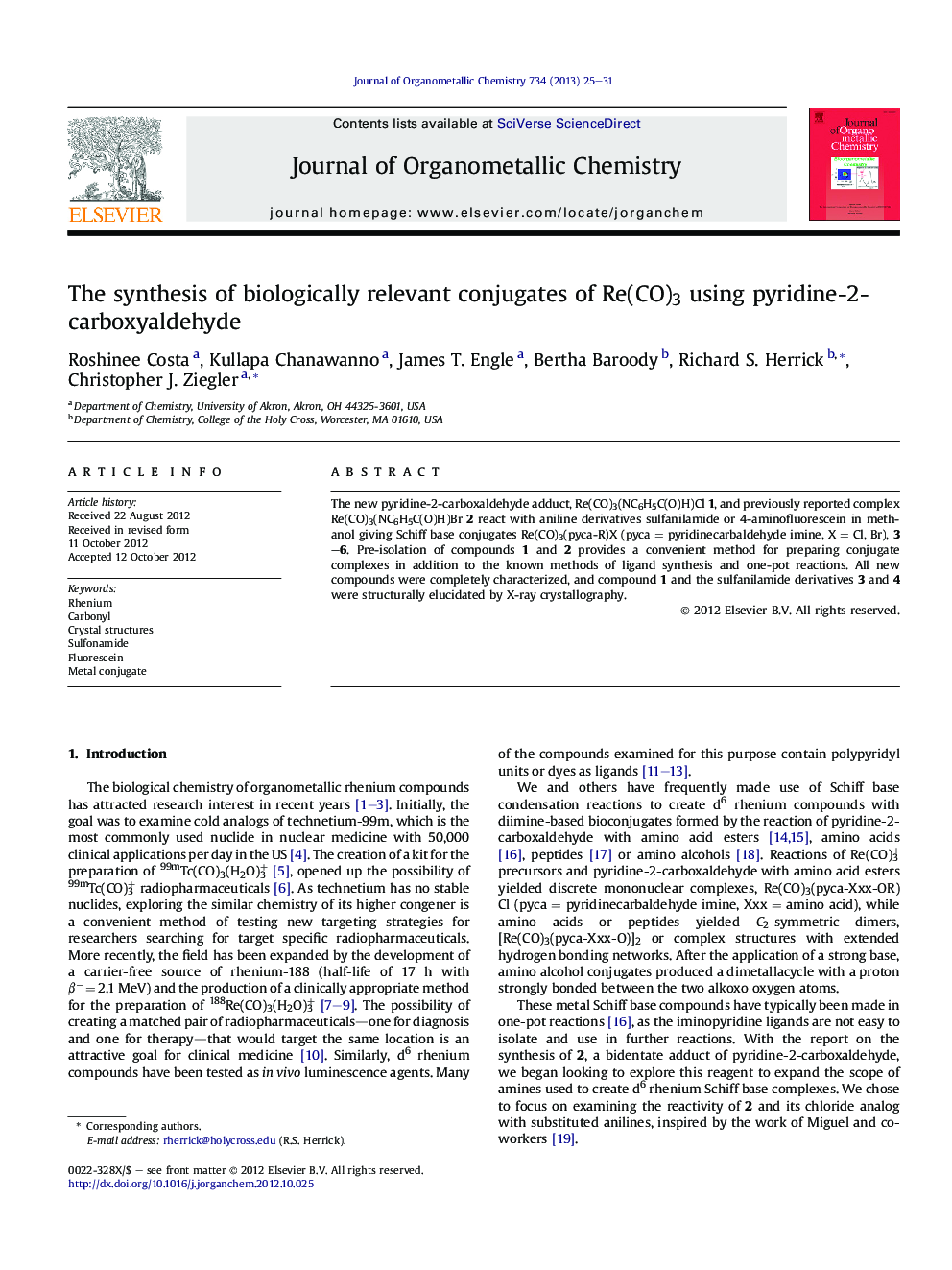| Article ID | Journal | Published Year | Pages | File Type |
|---|---|---|---|---|
| 1321815 | Journal of Organometallic Chemistry | 2013 | 7 Pages |
The new pyridine-2-carboxaldehyde adduct, Re(CO)3(NC6H5C(O)H)Cl 1, and previously reported complex Re(CO)3(NC6H5C(O)H)Br 2 react with aniline derivatives sulfanilamide or 4-aminofluorescein in methanol giving Schiff base conjugates Re(CO)3(pyca-R)X (pyca = pyridinecarbaldehyde imine, X = Cl, Br), 3–6. Pre-isolation of compounds 1 and 2 provides a convenient method for preparing conjugate complexes in addition to the known methods of ligand synthesis and one-pot reactions. All new compounds were completely characterized, and compound 1 and the sulfanilamide derivatives 3 and 4 were structurally elucidated by X-ray crystallography.
Graphical abstractRe(CO)3(NC5H4CHO)X, X = Cl 1, Br 2, were treated with sulfanilamide or 4-aminofluorescein to create new pyridine-2-carbaldehyde imine compounds Re(CO)3(pyca-R), 3–6. Novel compounds 1, 3 and 4 were structurally elucidated. Compounds 5 and 6 were characterized by NMR and mass spectroscopy. Fluorescence measurements were made for compounds 5 and 6.Figure optionsDownload full-size imageDownload as PowerPoint slideHighlights► We report the preparation of a new Re(I) pyridine aldehyde. ► We relate the preparation of four new bioconjugates. ► Three crystal structures are reported. ► The fluorescein derivatives are luminescent; quantitative spectra were recorded. ► The sulfonamide derivatives mimic derivatives used in carbonic anhydrase targeting.
